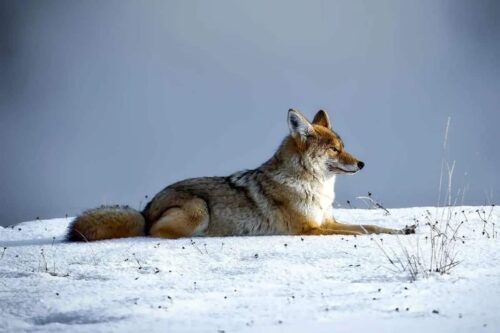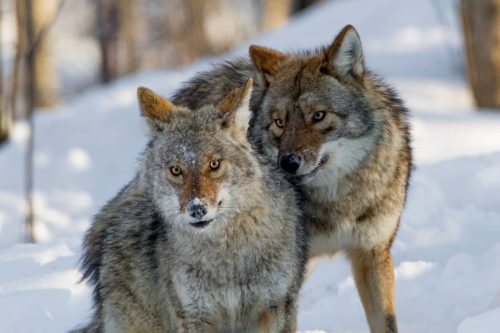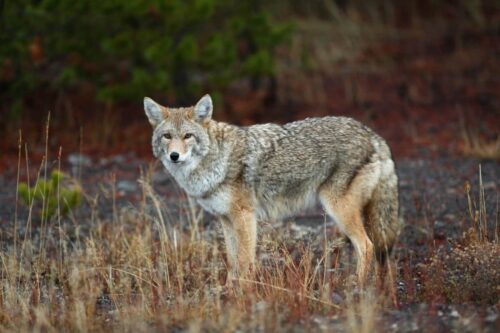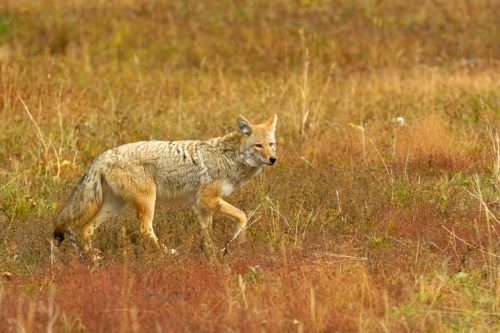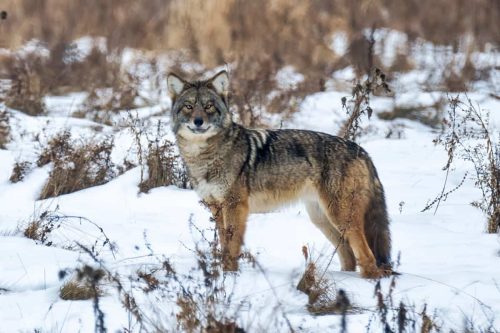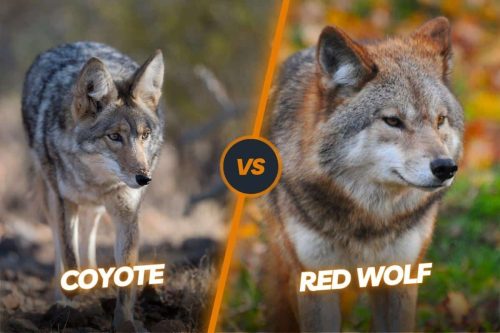Coyotes in Kansas Suburbia: Understanding Their Presence
Welcome to an in-depth exploration of the intriguing world of coyotes in the heart of Kansas. This comprehensive blog aims to provide a thorough understanding of the role these resourceful canids play within the state’s diverse ecosystem. From their historical presence to their intricate behaviors, habitat preferences, and interactions with the human population, we embark on a journey that uncovers the captivating story of Kansas coyotes.
Join us as we delve into the pages of their history, behavior, and ecological significance, unraveling the mysteries that surround these remarkable creatures in the Sunflower State of the USA.
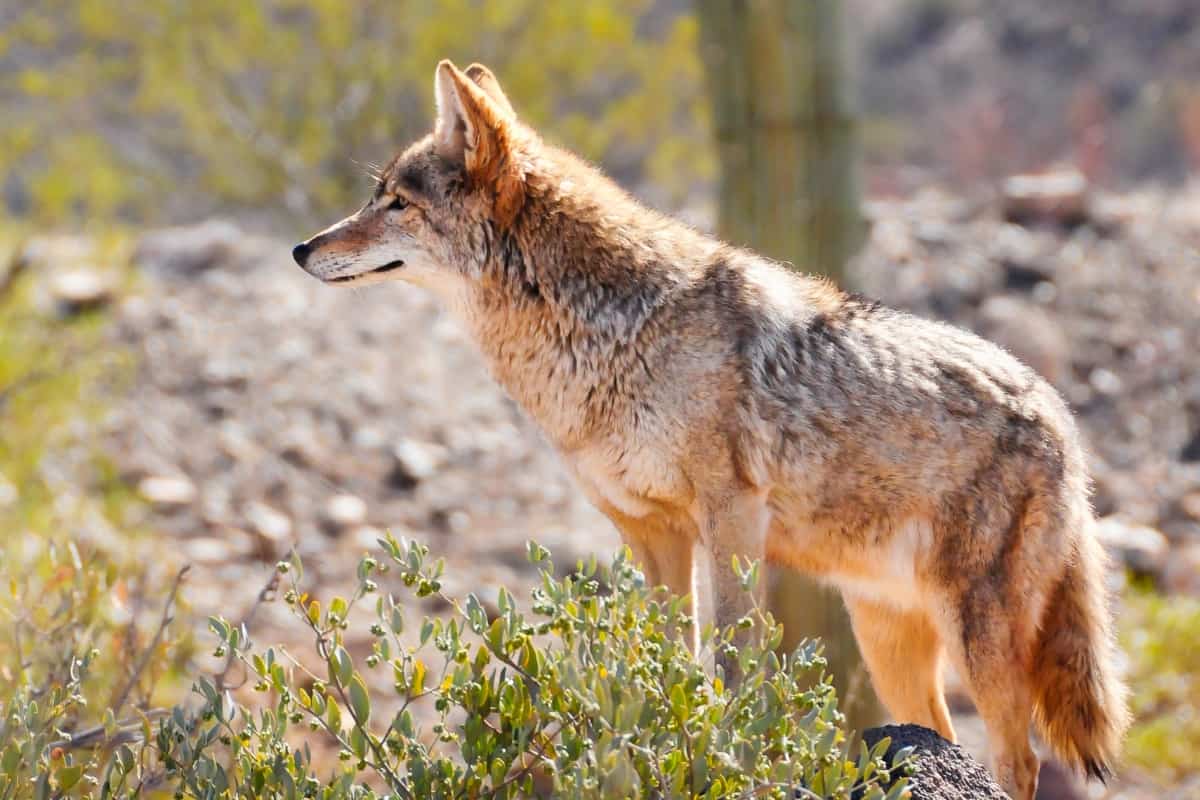
Contents
- Historical Background of Coyotes in Kansas
- The Role of Coyotes in the Ecosystem of Kansas
- Coyote Habitat and Distribution in Kansas
- Coyote Behavior and Social Structure in Kansas
- Coyotes’ Diet and Hunting Habits in Kansas
- Interactions Between Coyotes and Kansas Human Population
- Coyote Management and Conservation Efforts by Kansas Community
- Understanding Coyote Vocalizations
- Kansas Coyotes: Challenges and Adaptations
- Myths and Facts about Coyotes in Kansas Culture
- Rules and Regulations of Hunting Coyotes in Kansas
- Conclusion
- FAQs
Historical Background of Coyotes in Kansas
The historical tapestry of coyotes in Kansas reveals a captivating narrative of adaptation and persistence. Native to the plains, these canids have a lineage stretching back centuries, entwined with the evolution of both the region’s natural landscape and its human inhabitants.
Early Native American communities observed coyotes as elusive beings, attributing them a mix of reverence and caution. With European settlement and habitat transformation, coyotes displayed unparalleled adaptability, expanding their range across diverse environments. The early 20th century witnessed intensified predator control efforts aimed at protecting livestock, leading to a fluctuating population trajectory.
Despite these challenges, coyotes demonstrated astonishing resilience, adjusting their behaviors to coexist with human-altered habitats. The historical background of coyotes in Kansas is a testament to the intricate dance between nature’s tenacity and the transformative impact of human presence, forging a narrative that continues to unfold in the modern era.
Also, read coyotes in Iowa state to learn more about their dispersal.
The Role of Coyotes in the Ecosystem of Kansas
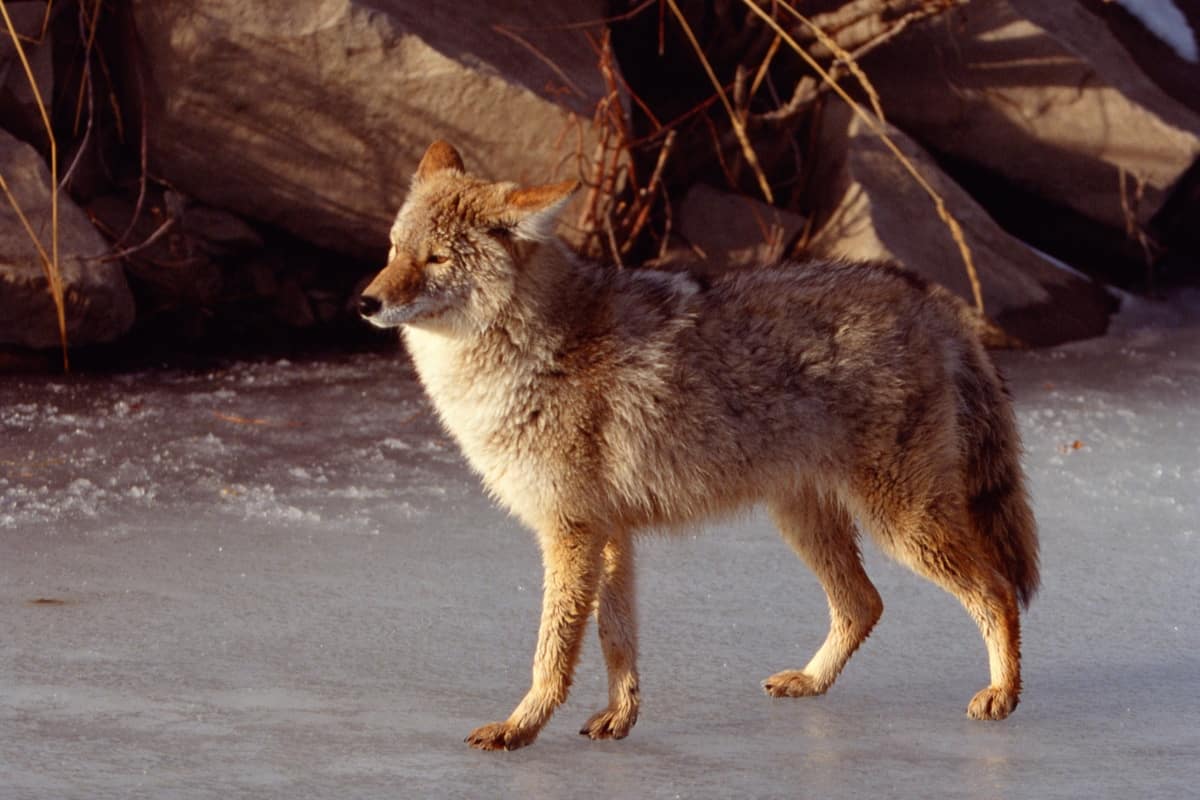
Coyotes occupy a vital niche in Kansas’ intricate ecosystem, orchestrating a delicate balance between predator and prey. As apex predators, their presence ripples through the food web, regulating populations of small mammals and rodents that, if unchecked, could disrupt the equilibrium. By controlling these populations, coyotes indirectly influence plant communities and protect against habitat degradation.
Additionally, their scavenging tendencies contribute to nutrient cycling, benefiting soil health and vegetation growth. While their predation can impact certain prey species, it fosters diversity by preventing any one species from becoming dominant. In this intricate dance of ecological interactions, coyotes emerge as guardians of biodiversity, shaping the fabric of Kansas’ natural environment and safeguarding its delicate harmony.
Coyote Habitat and Distribution in Kansas
Coyotes display remarkable adaptability in Kansas, thriving across diverse landscapes. From open grasslands to urban fringes, they navigate this varied terrain with ease. Their presence spans the entire state, showcasing their ability to coexist in both rural and human-altered environments. This adaptable nature makes them a defining species of Kansas’ ecosystem, emblematic of the state’s dynamic and ever-evolving natural tapestry.
Coyote Behavior and Social Structure in Kansas
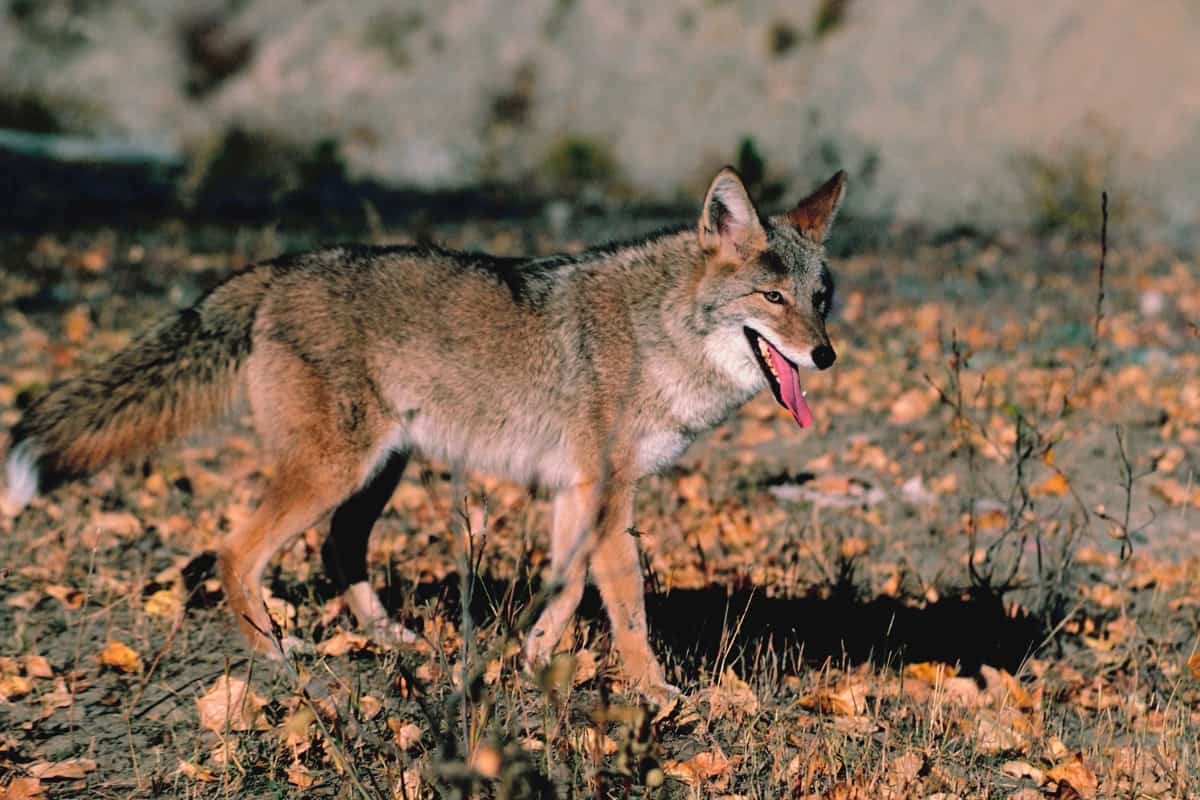
Coyotes’ behavior in Kansas reflects their resilient and social nature. These canids exhibit complex dynamics, forming family units that collaborate for survival. Their social structure extends to intricate communication through vocalizations, body language, and scent marking. Inhabiting territories that encompass food sources, their territoriality serves to sustain their groups.
While individualistic in some aspects, they unite for mutual protection, especially during pup-rearing seasons. The blend of solitary and communal behaviors showcases their adaptability to Kansas’ varied habitats, underscoring the intricate web of interactions that shape their presence in the state’s social structure.
Coyotes’ Diet and Hunting Habits in Kansas
Coyotes in Kansas demonstrate an opportunistic and diverse diet that mirrors their adaptability. These canids are skilled predators, targeting small mammals, such as rabbits and rodents, which help control potential pest populations.
Their versatile hunting tactics encompass stalking, pouncing, and cooperative hunting, highlighting their intelligence and resourcefulness. Additionally, they embrace scavenging, feeding on carrion and human food waste, which aids in nutrient cycling.
Their ability to exploit various food sources underscores their role in shaping the state’s ecological dynamics, as they navigate a fine balance between predator and scavenger within the intricate web of Kansas’ wildlife interactions.
Interactions Between Coyotes and Kansas Human Population
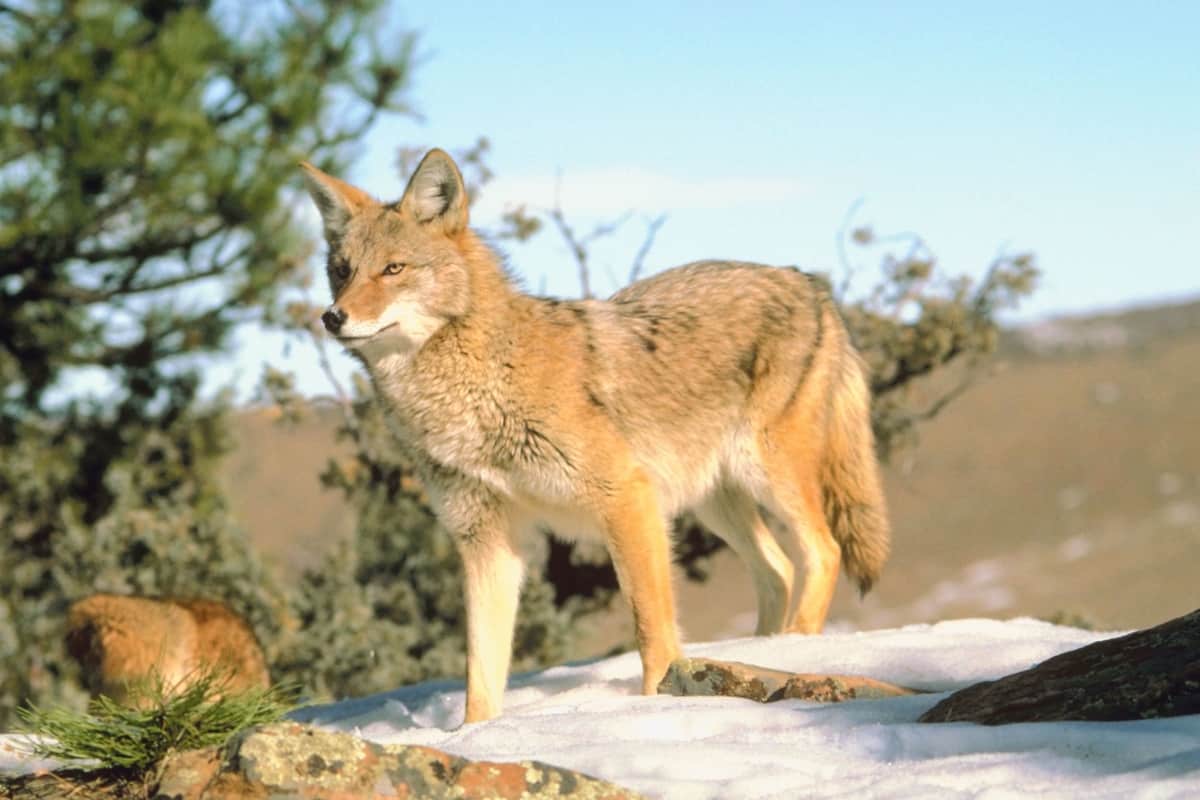
Coyotes’ presence in Kansas often intersects with human activities, presenting a dynamic interplay of coexistence and challenges. While essential for ecosystem balance, their interactions with the human population can evoke concerns about pet safety and livestock predation.
Education plays a pivotal role in fostering responsible cohabitation, emphasizing methods to minimize conflicts. Balancing appreciation for their ecological role with practical solutions for urban and rural areas is crucial. By understanding coyotes’ behaviors and needs, Kansas residents can actively contribute to peaceful coexistence while ensuring the safety and well-being of both human communities and these adaptable canids.
Coyote Management and Conservation Efforts by Kansas Community
In Kansas, proactive management strategies and community-driven conservation initiatives are vital for harmonizing coyote presence with human activities. Education campaigns raise awareness about coexistence methods, emphasizing responsible pet ownership and secure livestock practices.
Non-lethal deterrents are encouraged to reduce conflicts, promoting an understanding of the critical role coyotes play in maintaining ecosystem health. Collaborations between local communities, wildlife agencies, and researchers bolster data-driven approaches for sustainable management.
By embracing a balanced approach, Kansans honor the ecological significance of these canids while mitigating potential conflicts, ensuring a future where coyotes and humans coexist in harmony within the state’s diverse landscapes.
Understanding Coyote Vocalizations
Coyote vocalizations serve as a captivating language that unveils their intricate communication network in the Kansas wilderness. From haunting howls that pierce the night to a diverse range of barks, yips, and growls, these vocalizations convey messages of territory, mating, and social bonding.
Their eerie calls resonate across Kansas’ diverse landscapes, often sparking curiosity and a sense of connection with the wild. By delving into the meanings behind these vocal expressions, we gain a deeper insight into the behaviors and interactions that define the lives of these enigmatic canids in the heart of the Sunflower State.
Kansas Coyotes: Challenges and Adaptations
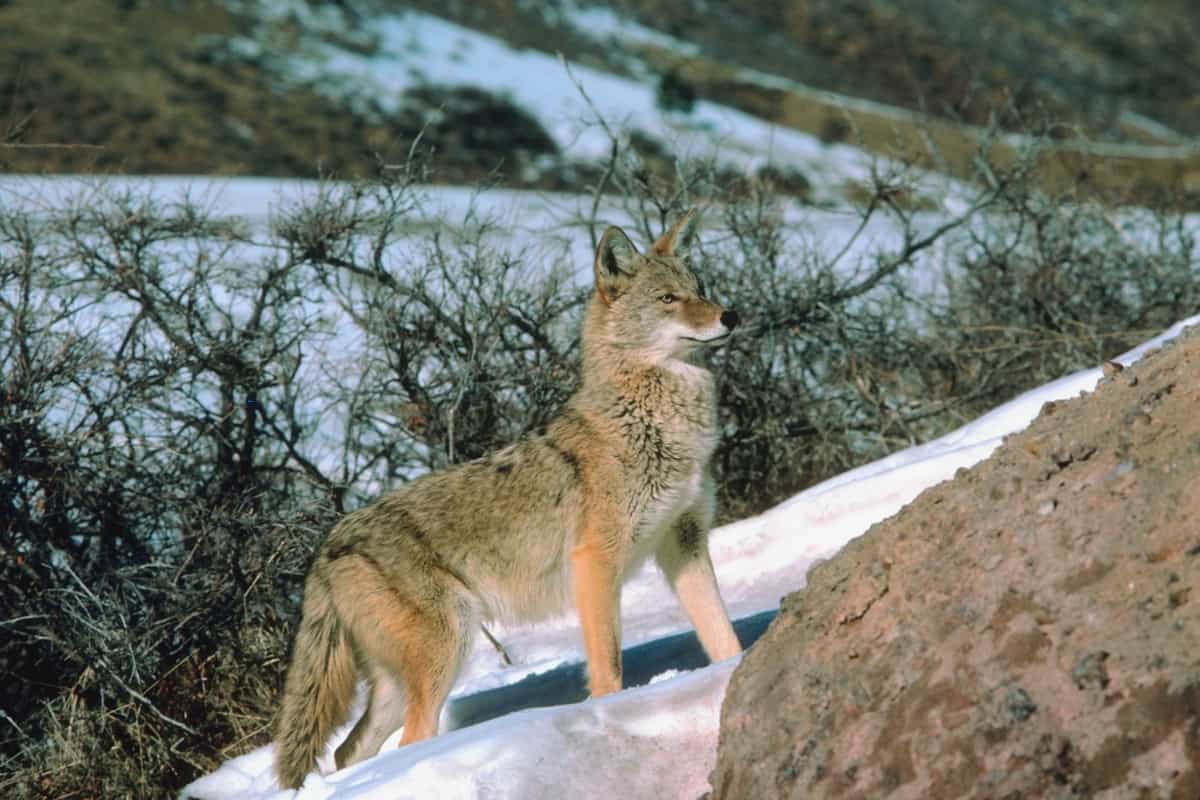
Surviving in the ever-changing landscape of Kansas poses unique challenges for coyotes. Encroaching urbanization alters their habitat, testing their adaptability. As apex predators, they sometimes clash with human activities, leading to misunderstandings and conflicts.
However, their remarkable ability to adjust shines through, as they navigate urban fringes, alter their diets, and adopt nocturnal behavior to avoid human encounters. These adaptations showcase their resilience in the face of adversity. Understanding the hurdles they face and the strategies they employ not only deepens our appreciation for these canids but also underscores the dynamic dance between nature and urbanization in Kansas.
Myths and Facts about Coyotes in Kansas Culture
Within the fabric of Kansas culture, myths and facts about coyotes intertwine, creating a tapestry of beliefs that often diverge from reality. These enigmatic canids have been subject to misconceptions, perpetuated by tales of cunning and superstitions. Distinguishing between these myths and the scientific truths is essential.
Coyotes’ presence isn’t synonymous with danger; they primarily avoid human contact. Dispelling myths about their threat to livestock safeguards their ecological importance. Recognizing their role as natural pest controllers fosters coexistence.
Unraveling the threads of myth from fact enriches our understanding, enabling us to embrace these canids as integral components of Kansas’ vibrant cultural and ecological heritage.
The Significance of Coyotes in Native American Culture
In Native American culture, the coyote holds a profound significance as a symbol of both wisdom and trickery. Revered for its resourcefulness, adaptability, and survival instincts, the coyote often features in stories that impart valuable life lessons.
As a shape-shifter, it embodies duality – a trickster challenging societal norms while imparting knowledge. Its howls are considered both spiritual and earthly, connecting realms. The coyote’s portrayal varies among tribes, reflecting diverse interpretations and teachings.
With its presence in creation myths, the coyote resonates with Native American cosmology, embodying the intertwined essence of life’s complexity. Through their lore, the coyote becomes a cultural bridge, fostering an understanding of the natural world’s harmony and chaos within Native American traditions.
Rules and Regulations of Hunting Coyotes in Kansas
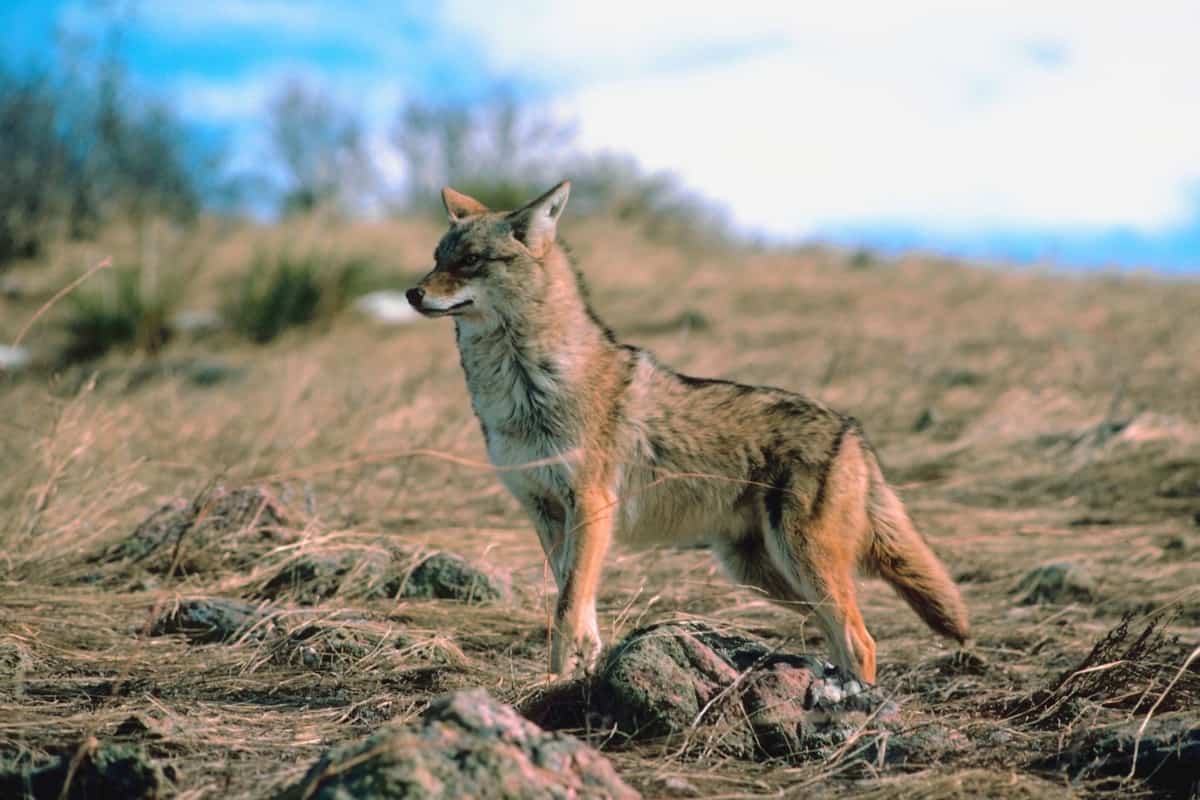
Hunting coyotes in Kansas is subject to specific rules and regulations aimed at ensuring ethical and sustainable practices.
These regulations reflect Kansas’ commitment to responsible wildlife management, acknowledging the role of hunters in controlling coyote populations while upholding conservation values.
Conclusion
In conclusion, delving into the realm of coyotes in Kansas unveils a complex tapestry woven with history, ecology, culture, and coexistence. These canids embody the delicate balance between adaptation and challenges, as they navigate changing landscapes and human interactions.
By deciphering their vocalizations, debunking myths, and appreciating their roles in both Native American traditions and the modern ecosystem, we cultivate a holistic understanding of these enigmatic creatures. Balancing responsible management with conservation efforts enables us to harmonize their presence with our communities.
As we reflect on the significance of coyotes in Kansas, we embark on a journey of discovery, bridging the gap between human perception and the intricate web of life they inhabit.
FAQs

Ray is an experienced wildlife researcher with a background in veterinary medicine. His contributions have significantly advanced our understanding of various wild animals.

